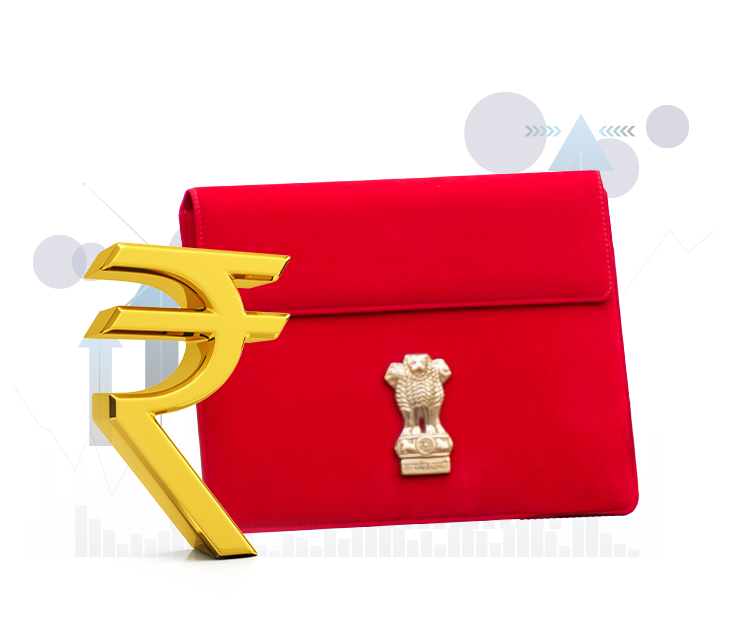Union Budget 2025: Reforms & Roadmap to Boost Growth and Competitiveness for MSMEs
- 2.5x and 2x raise in investment & turnover thresholds for businesses expansion & employment
- ₹1.5 Lakh Crore dedicated to MSME credit for better infrastructure and access to larger markets
- National Manufacturing Mission to increase the sector’s contribution to GDP from 17% to 25%
- Removal of 82 tariff lines to cut raw material costs and simplify compliance
- India Post’s transformation into a logistics provider and enhanced National Cooperative Development Corporation (NCDC) lending to strengthen distribution networks
With more than 5.7 crore MSMEs generating 36% of India’s total manufacturing output, contributing nearly 45% of exports, the Union Budget 2025 gives the sector the recognition it deserves. Presented by Finance Minister Nirmala Sitharaman on 1 February, the budget is not just a symbolic nod to the MSMEs as the ‘Second Engine’ of India’s economy—right after agriculture. To enable MSMEs to scale efficiently, upgrade technology, and access better financial opportunities, the investment and turnover limits for their classification will be increased by 2.5 times and 2 times, respectively. This reform will empower businesses to expand with confidence and help in increasing employment opportunities for the youth.
The government has also provided MSMEs with a roadmap for growth and global competitiveness, bringing real, tangible reforms through expanded credit limits, lowered tax burdens, supply chain transformation, and ease of doing business policies
A Game-Changer for MSME Credit Access
Budget 2025 unlocks ₹1.5 lakh crore in additional credit over the next five years through an expanded credit guarantee scheme. This is not just another government financial aid initiative—it’s a fundamental shift in MSME financing. The credit guarantee limit has been doubled to ₹10 crore for micro and small enterprises and raised to ₹20 crore for well-performing exporter MSMEs. “The significant enhancement of credit guarantees will fuel expansion, machinery upgrades, and global trade competitiveness,” says Amit Gupta, Partner, Protium.
Furthermore, Budget 2025 also strengthens cooperative lending by expanding the NCDC’s support for MSMEs, dairy cooperatives, and food processing businesses. The financial inclusivity will ensure small enterprises get structured credit at scale so that businesses can expand, invest in better infrastructure, and access larger markets. “Access to timely and affordable loans is not just an enabler but a lifeline for MSMEs. With the additional credit, expanded guarantee limits, and stronger cooperative lending, businesses now have the runway to invest in better infrastructure, scale operations, and upgrade technology without liquidity constraints,” says Yogendra Singh, Partner, Protium.
Taxation & Input Cost Reforms Provide Scope for Long-Term Growth
MSMEs have often struggled with complex tax filings that drain their resources and limit expansion, thus reducing their profit margins. The Budget 2025 addresses these by introducing a lower tax rate for small businesses under a revised slab and simplifying GST compliance with a single-window filing system. Individuals earning up to ₹12 lakh annually will have zero tax liability under the new regime, which will increase disposable income, strengthen consumer demand, and benefit MSMEs. With a stronger middle-class spending more, MSMEs in retail, manufacturing, and services will see direct gains.
Tax Slabs for MSME Business Owners:
| Total Income (₹) | Rate of Tax (%) |
| Up to ₹4,00,000 | Nil |
| ₹4,00,001 – ₹8,00,000 | 5 |
| ₹8,00,001 – ₹12,00,000 | 10 |
| ₹12,00,001 – ₹16,00,000 | 15 |
| ₹16,00,001 – ₹20,00,000 | 20 |
| ₹20,00,001 – ₹24,00,000 | 25 |
| Above ₹24,00,000 | 30 |
On the manufacturing front, rationalization of customs duties will lower input costs for MSMEs in textiles, engineering, and auto components. “The removal of the Social Welfare Surcharge on 82 tariff lines is a particularly welcome move, reducing the cost of importing essential raw materials. This means that capital investments—whether in new machinery or expanded production lines—become more viable,” says Amit Gupta, Partner, Protium.
Transforming Supply Chains & Logistics
For MSMEs in Tier-2 and Tier-3 cities, logistics has long been a bottleneck as slow deliveries, high transportation costs, and unreliable supply chains have prevented them from scaling beyond their regional markets. But now, with 1.5 lakh rural post offices and 2.4 lakh Dak Sevaks being integrated into India’s logistics backbone, MSMEs will have access to a far more efficient distribution network. “The transformation of India Post into a large-scale logistics provider will significantly enhance rural and MSME supply chains, ensuring seamless distribution for Viswakarmas, new entrepreneurs, and self-help groups. With these well-calibrated policies, MSMEs are poised for accelerated growth in both domestic and international markets,” says Amit Garg, Partner, Protium.
Building an MSME-First Future
Budget 2025 signals a bold shift in India’s economic trajectory, blending sustainability, entrepreneurship, and global ambition into a blueprint for long-term growth and setting India up as a global leader across industries. From AI to traditional superfoods, from medical tourism to manufacturing dominance, MSMEs will also be placed on the world stage.
Key highlights of the budget supporting MSMEs:
- ₹500 Crore Investment in AI Centers of Excellence – Strengthening AI education and innovation to drive India’s future as a technology leader.
- Creation of a Makhana Board in Bihar – Boosting agriculture-backed exports by leveraging India’s rich traditional superfood market.
- ₹4 Lakh Crore Footwear Manufacturing Push – Expected to generate 22 lakh jobs and drive ₹1.1 lakh crore in exports, positioning India as a global manufacturing hub.
| Industry/Section | Key Budget Highlights |
| MSMEs (General) | Customized Credit Cards with ₹5 lakh limit for Udyam-registered micro-enterprises (10 lakh cards in the first year). National Manufacturing Mission to further “Make in India,” to increase the manufacturing sector’s contribution to GDP from 17% to 25%. ₹20,000 crore allocated for private sector-driven Research, Development, and Innovation. Deep Tech Fund of Funds to catalyze next-generation startups. |
| Women/SC/ST Entrepreneurs | New scheme for 5 lakh women, SC, and ST first-time entrepreneurs with term loans up to ₹2 crore over 5 years. Online capacity building for entrepreneurship and managerial skills. |
| Textiles | Two new types of shuttle-less looms added to the list of fully exempted textile machinery. BCD rate on knitted fabrics revised from 10% or 20% to 20% or ₹115 per kg, whichever is higher. Promotion of domestic production of technical textiles (agro, medical, geo). |
| Startups | New Fund of Funds with ₹10,000 crore contribution (expanded scope). Deep Tech Fund of Funds to catalyze next-generation startups. |
| Handicrafts | Export duration for handicrafts made from duty-free inputs increased from 6 months to 1 year (extendable by 3 months). |
| Lab-Grown Diamonds | IGCR condition removed for custom duty exemption on import of seeds for manufacturing rough lab-grown diamonds. |
| Exports/Imports | Time limit for exporting foreign-origin goods imported for repairs extended from 6 months to 1 year (extendable by 1 year for railway goods). |
| Gig Economy | Identity cards and registration to be provided for gig workers to enhance social security and benefits. |
| Toy Manufacturing | New scheme to position India as a global toy manufacturing hub (cluster development, skill-building). |
| Ease of Doing Business | Scheme to determine arm’s length price of international transactions for a 3-year block period. Expanded scope of safe harbour rules for international taxation Streamlined process of transfer pricing. |
MSMEs as Drivers of Economic Expansion
Budget 2025 lays a strong foundation for the future of MSMEs, equipping them with the tools to drive India’s next phase of economic expansion. Enhanced financial access, eased tax burdens, and stronger supply chain infrastructure are designed to empower MSMEs to scale efficiently, embrace digital transformation, and tap into emerging market opportunities. As these enterprises grow, they will not only strengthen their own resilience but also propel India toward a more dynamic and competitive economic future.

